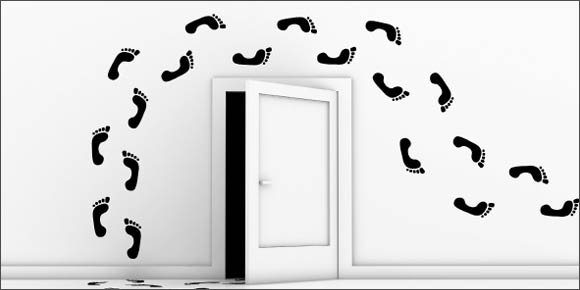The reports of the death of open houses have been greatly exaggerated. Here’s how to make your next one a success.
By Gwen Moran
Are open houses still worth the effort? A 2015 RISMedia survey of real estate professionals found that 56 percent of respondents called open houses “pointless.”
But before you ditch the signs in your trunk, consider this: Fully 44 percent of respondents said they’re still important and 76 percent said that customers “frequently” or “always” expect them. Sixty-two percent of respondents host between one and three open houses per month.
Of course, if you’re going to spend the time planning and hosting an open house, the investment must pay off, says Marlene S. Giles, CRS, associate broker with RE/MAX 1st Olympic in Lynchburg, Virginia. Giles has had regular success with open houses because they offer an opportunity to give the prospective buyer an intimate view of the home and show off its features.
“If you show them a patio or a nice porch and say, ‘Wouldn’t this be a nice place to sit and read,’ they can begin to picture themselves on the porch,” she says. That’s a powerful dynamic. The key to success is a mix of tried-and-true tactics and some creative and technological touches to get the best results.
Open House Preparation
In the tight Southern California South Bay market where Susan Nielsen, CRS, a sales agent with The Real Estate Group in Torrance, California, does business, the average time a home is on the market is just five days. So open houses give her an opportunity to get many buyers through the door quickly the first weekend after she lands the listing. She also takes advantage of the open house to farm the neighborhood, giving away flyers and meeting people who might become future clients. She typically places a sign rider on the home’s “For Sale” sign as much as a week in advance. Directional flag signs work well, she says. Both Nielsen and Giles put their open houses in the home’s Multiple Listing Service (MLS) listing. Giles advertises in the local newspaper the weekend of the event, as well.
Michael Selvaggio, CRS, broker/owner of Delaware Homes Inc., in Townsend, Delaware, recommends in his webinar, “The Perfect Open House,” a longer lead time. Roughly two weeks ahead of time, he suggests creating a postcard mailing of roughly 50 to 100 pieces to prospects and possible referral sources. If you want to reach a larger audience in the area, go to the U.S. Postal Service’s “Every Door Direct” service on its website and select an area, and you can get all of the addresses for that region. Demographic tools on the site let you select various audience features such as age and income.
Add Tech Touches
Email is another important tool to help generate results. Send a blast out to appropriate members of your database. When sending an email to other REALTORS®, Selvaggio suggests adding the price to the subject line, which will immediately grab the attention of those who have clients searching for homes in that price range, he says. Nielsen also uses Facebook to keep in touch with her network and share open house information. Instagram is another good tool for promoting open houses. Social sharing may help jog the memory of someone who has a contact interested in buying or selling, she says.
Real estate marketing consultant David Fleming, principal of PACE Communications Group in Boston, recommends to his REALTOR® clients that they promote their open houses like they would promote an event. Today, that includes multimedia components. Facebook Live or Periscope can be useful tools to live stream the event. Fleming suggests promoting and hosting a live-stream, question-and-answer session about the home for 30 to 60 minutes before the open house starts. That will allow people to check in with questions and will “tease” the open house, drawing interest from prospective buyers. Don’t give too much away—you don’t want it to substitute for an in-person walk-through—but show a few of the home’s nicer features and answer questions. Be sure to promote the live-stream through email and social media leading up to the event.
Following Up
Much of the success of any open house lies in the follow-up. Be sure that you have a method of capturing information from the people who attend the open house, Nielsen says. Giles has a sign-in sheet and calls contacts within a day or two after the open house. She also works closely with mortgage brokers who can create financing sheets on the home so buyers can see what their payments might be and understand what they can afford.
Use the open house as an opportunity to get additional photographs or video of the property when it looks its best and share those on social media and YouTube, and with your email list. Nielsen also follows up with neighbors who stopped by to continue the conversation with them. After all, you never know when they might be ready to sell or know someone who is in the market to buy.
Open houses can be a valuable selling tool in many markets. Think creatively about how to promote the event beforehand and follow up afterward to reap the best rewards for your efforts.
Open Lines of Communication
Promote your open houses for greatest success. Here are four no- or low-cost tools that can help.
Moo (moo.com)
Low-cost, four-color custom printing, including flyers and postcards.
Facebook Live (apps.facebook.com/livestream)
Live-stream part of your open house or hold a pre-open house question and answer session.
U.S. Postal Service Every Door Direct (eddm.usps.com)
Get all of the addresses in the area of your open house, and filter them by age, income and other demographics.
Canva (canva.com)
Free flyer design program.
For more information on using Facebook Live, including for open houses, download the webinar 5 Secrets to Maximizing Facebook Live for Realtors at CRS.com.








